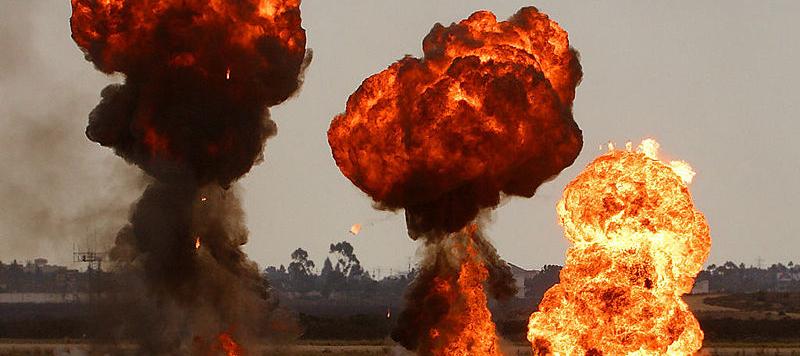A proxy war is a conflict between two nations where neither directly engages the other. While this can include an extent of armed altercations, its core definition hinges on two separate powers utilizing external discord to somehow attack the interests or territorial fortune (in some cases) of the other. This frequently involves both countries fighting their opponent’s allies or assisting their allies in fighting their opponent.
The Middle East is one of the most complicated regions in the world. At present, there are 8 proxy wars being engaged in 3 (failing) states with major powers regularly taking sides. The region is in a state of perpetual conflict but among all the unrest, civil wars and insurgencies two rival countries always seem to be involved, Saudi Arabia and Iran. Both The Kingdom of Saudi Arabia and The Islamic Republic of Iran see these civil wars as enormous threats to their own governance as well as incredible opportunities to establish command and influence in the region. Hence, as of 2018, the two countries are engaged in a Cold War.
Proxy wars have been common since the rise of the Cold War between the U.S. and the Soviet Union and were a defining aspect of global conflict during the latter half of the twentieth century. Much of this was motivated by fears that a direct confrontation would lead to a nuclear holocaust, rendering proxy wars as a seemingly safer way of exercising hostilities. Post-WW1, the Ottoman Empire in the Middle East collapsed, giving an opportunity for the local tribes to fight for dominance. By 1932, a Sunni Muslim group, Al Saud, created the Kingdom of Saudi Arabia. Six years later, oil was discovered and in an instant the Saudi monarchy was rich. This helped to forge an alliance with the US. On the Eastern front, Iran also had massive oil reserves and an even bigger Muslim (majority Shia) population. By the 1970s, both Iran and Saudi Arabia had oil-based economies heavily backed by the U.S.
In the aftermath of the Iranian Revolution, The Shah of Iran was overthrown in 1979 by Ayatollah Khomeini, an Islamic clergyman. The Iranian revolution sent a chill down the spines of the Saudi monarchy. They were fearful that Ayatollah Khomeini would inspire their own population to an uprising. This was the beginning of what would eventually lead to a Cold War between the two Gulf countries. Saudi Arabia’s concerns were not unfounded as it was soon discovered that Iranian leaders, including Ayatollah Khomeini, were exporting their revolution. There were numerous intelligence reports shedding light on their efforts to overthrow governments in Iraq, Afghanistan and other Gulf States. This prompted the Saudi monarchy to embolden their ties with U.S.A and soon, under the patronage of Saudi Arabia, Iraq invaded Iranian border in 1980 and annexed some of its oil reserves. Once Iran started winning, Saudi panicked and came to Iraq’s rescue. By the end of it, a million Iraqi people had died. The war eventually bogged down to a deadlock in 1988.
In 2003, the U.S. infamously invaded Iraq and overthrew Saddam Hussein’s government. Neither Saudi Arabia nor Iran wanted this to happen since Iraq was acting as a buffer between them. After failing to establish a new government, the U.S left Iraq in a sea of chaos. Directionless and without an armed government, Sunni and Shia militias and extremist groups sprung up trying to gain power. Iraq was, and continues to be, a proxy war between Saudi Arabia and Iran.
While the events leading up to the Iraq War may seem inexplicable yet somewhat predictable, Syria’s war is an unmitigated disaster. It all began in March 2011 when President Bashar Al Assad fired the first shots against peaceful Arab Spring demonstrators. Come July, protesters retaliated with similar firepower. Some Syrian troops even defected from the army and joined the rebels calling themselves the Free Syrian Army (FSA, officially disbanded in late 2013). Seven years and hundreds of thousands of civilian deaths later, the seemingly ceaseless war rages on. The conflict is now primarily divided between four sides, each side with foreign backers, and, to top it all off, none of the foreign backers formally agree with each other on who they’re fighting against.
Take, for example, the fight against ISIS. The U.S entered the war (2015) indirectly, arming and training Syrian government rebel factions only to fight ISIS and not the Syrian government itself, whereas ISIS is headlining the rebel faction trying to overthrow Assad. Not to forget the other major player, Russia, has put all its weight behind the Assad government and is supplying arms and aid to flatten all the rebels. So technically, Syria may be the latest potential proxy war between a capitalist U.S. and communist Russia after Cuba, Vietnam and Nicaragua. A proxy war within a proxy war, chaos indeed.
It’s important to mention here that Saudi-Iran confrontation took place in Libya, Lebanon and Morocco as well. Now it has gone a step further. In 2017, Saudi Arabia set up a base camp in Yemen to help solidify the government and in retaliation Iran engaged a proxy militia group known as the Houthis.





